|
Limited Excess Property Program |
|
June 2024
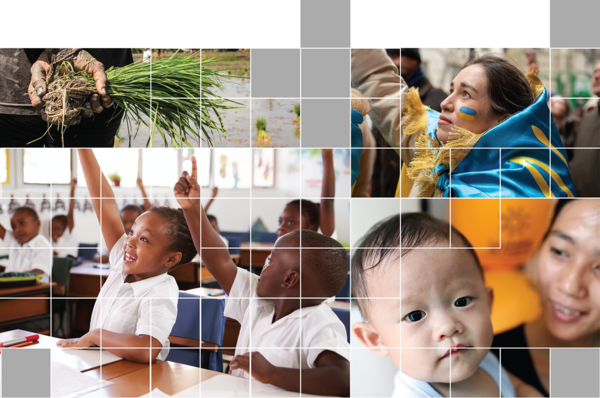
The Limited Excess Property Program (LEPP) provides Private Voluntary Organizations (PVOs) access to federal surplus property to support their humanitarian and development projects abroad. LEPP utilizes an innovative model of recovery and reuse to support a variety of development projects that promote sustainability in developing countries. LEPP is managed by USAID's American Schools and Hospitals Abroad (ASHA) Initiative, which is part of the Bureau for Inclusive Growth, Partnerships, and Innovation's Local, Faith, and Transformative Partnerships (LFT) Hub.
|
|
SECOND QUARTER LEPP PROPERTY TRANSFER HIGHLIGHTS |
|
|
Various items valued at $3,354,431 were requisitioned and processed through LEPP in the second quarter of fiscal year 2024. Most of the property was earmarked for regional hospitals and health care centers that serve remote populations in Africa, Asia, Eastern Europe, Latin America, and the Caribbean.
-
CharityVision, in partnership with LEPP, accessed ophthalmology equipment including a Cirrus 4000 HD OCT worth $77,950 and a Selecta Duet YAG/SLT combination laser worth $90,950 that will ship to Pakistan. The equipment will be allocated to the new Mehboob Charity Vision clinic in Islamabad, which is slated to open in early 2025. There are just over 1 million people living in Islamabad. The new clinic will offer affordable or free ophthalmology services to patients depending on their socioeconomic status. The YAG laser will be used to treat post cataract surgery patients who have developed scar tissue after their surgery. Twenty to 25 percent of cataract patients require YAG services. The OCT will be used to take pictures of the retina (back of the eye) and get images of the optic nerve that connects the eyes to the brain. The OCT is especially helpful to check the retina's overall health and for patients with glaucoma or diabetes.
-
CURE International, in partnership with LEPP, accessed one C-Arm worth $178,372 that will ship to Kenya and one C-Arm worth $178,372 that will ship to the Philippines. Using a C-Arm imaging device in pediatric orthopedic surgeries enables surgeons to perform complex procedures with enhanced precision, real-time visualization, and minimized radiation exposure, contributing to improved outcomes for young patients. Less than 8 percent of people living in low- and middle-income (LMIC) countries like Kenya and the Philippines have access to primary surgical care, much less the specialized surgical care children with disabilities need. Without specialized care, minor, treatable conditions like clubfoot, bowed and windswept legs, spinal deformities, and untreated injuries can become permanently debilitating conditions. The two C-Arms transferred through LEPP will directly impact children in the Philippines and Kenya who have physical disabilities that can be corrected or alleviated through surgical interventions. CURE estimates that 2 million children are living with disabilities in the Philippines and 1.2 million in Kenya.
-
The Luke Commission (TLC), in partnership with LEPP, accessed five anesthesia machines worth $345,384 that will ship to central Eswatini for allocation to the Miracle Campus Hospital. TLC has been providing advanced specialty surgery in Eswatini for over a decade. The anesthesia machines transferred through LEPP will allow TLC to expand the number of operating rooms at the Miracle Campus Hospital. In 2023, TLC conducted over 1,500 surgeries which included general surgeries as well as cataract removals, corneal transplants, orthopedic surgeries (including 20 total hip replacements), and other advanced surgeries. TLC hosts over 300,000 patient visits annually.
|
|
PVO SPOTLIGHT ON THE LUKE COMMISSION |
|
 PHOTO CREDIT: TLC. ECHO VANDERWAL, CO-FOUNDER (WITH HUSBAND HARRY) OF TLC.
1. We appreciate your partnership. Can you tell us a little about your program and your role?
My name is Echo VanderWal. My husband, Harry, and I founded The Luke Commission (TLC) in 2005. TLC brings hope, help, and healing to the most isolated and underserved people of southern Africa through compassionate, comprehensive health care services, collaborating with local communities, government, and corporate and nonprofit partners. TLC’s services are provided at no cost to the patient. In 2023, our team of over 700 hosted over 300,000 patient visits.
TLC started in a rented house near Manzini, Eswatini, with just me and Harry, our four-year-old triplets, our one-year-old baby, and eight local staff. At the time, there was no treatment for HIV/AIDS. Determined to meet needs stemming from the epidemic and beyond, we quickly expanded to 15 staff. Each year, the staff and number of completed outreaches increased, outgrowing our humble beginning in the rented house.
In 2013, TLC acquired land for what is now The Luke Commission Miracle Campus in central Eswatini. With over 25 buildings, the campus provides comprehensive inpatient and outpatient health care, offering medical, mental health, disability, counseling, rehabilitation, emergency response, and telehealth services. The fixed-site Miracle Campus Hospital is recognized as a referral hospital, receiving patients from across Eswatini. Through high-volume surgical sessions, TLC offers specialty care including such procedures as cataract removals, corneal transplants, and hip replacements. In 2023, TLC cared for over 300 snake bite victims, all of whom survived.
A dozen or more mobile health outreaches deploy daily from the Miracle Campus Hospital. The campus facilities were especially critical in 2020 and 2021 when TLC treated over 90 percent of Eswatini’s severe and critical COVID-19 patients—patients who would not have otherwise had access to life-saving ventilators and oxygen.
Viewing all humans as precious regardless of age, socioeconomic status, or ability, TLC has reduced the stigma associated with pursuing treatment by caring for each patient with dignity, maintaining trust, and respecting confidentiality. Multiple organizations partner with or support TLC, including the U.S. President’s Plan for AIDS Relief (PEPFAR), the United States Agency for International Development, the U.S. Embassy in Eswatini, the Eswatini Ministry of Health, UNICEF, Free Wheelchair Mission, and Hope and Healing International.
2. What types of humanitarian aid or development programs are utilizing the federal surplus property transferred by your organization?
|
|
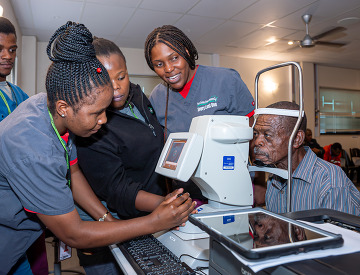 PHOTO CREDIT: TLC. TLC’S TEAM LEARNS HOW TO TAKE BIOMETRY MEASUREMENTS USING A ZEISS IOL MASTER OBTAINED THROUGH LEPP.
|
Surplus property obtained through LEPP is primarily utilized in our medical program, and we are so grateful for this support. Here are just a few of many examples: Our team uses ophthalmic equipment received through LEPP to screen patients’ eye conditions. A surgical |
|
|
microscope received through LEPP is used in the operating room where we perform hundreds of eye surgeries each year. Crash carts received through LEPP were put to immediate use on our inpatient ward. LEPP-donated ventilators were also entered into service, and it’s encouraging to know we have them should another pandemic like COVID-19 occur.
In addition to medical equipment, we have received commercial kitchen equipment through LEPP. This equipment has enhanced the work of our dietary team in providing over 1,000 meals daily to patients, visitors, and staff.
3. I know that our PVO Partners would not be able to successfully implement their programs/projects that use federal surplus property without on-the-ground access and local partnerships. Can you give me an example of a smart, flexible, and creative project where you partnered with your In-Country partners and local actors to achieve successful outcomes?
|
|
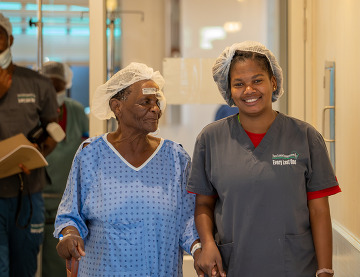 PHOTO CREDIT: TLC. CATARACT REMOVAL SURGERY BRINGS THE GIFT OF SIGHT TO HUNDREDS OF PATIENTS EACH YEAR AT TLC.
|
As a local implementing partner in Eswatini, TLC’s team is well-positioned to understand the health and development needs of Emaswati (the people of Eswatini) and to design initiatives and programs customized to this context. |
|
|
For example, TLC’s comprehensive health care platform of more than 40 services is intentionally designed to lead with compassion and to reduce stigma. We begin with whatever health challenge motivated the patient to present for care, and then offer every patient all services for which they are eligible. Stations/rooms where care is delivered are not identified by service but by a number; this approach greatly reduces stigma.
4. What community challenges/problems do these programs try to address? Can you share with us any statistical data related to the problems/challenges?
|
|
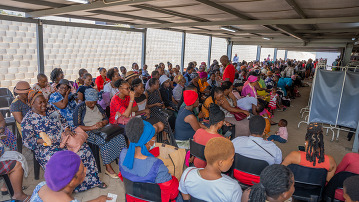 PHOTO CREDIT: TLC. PATIENTS QUEUE UP FOR HEALTH SERVICES AT THE MIRACLE CAMPUS HOSPITAL IN CENTRAL ESWATINI.
|
Eswatini has the highest prevalence of HIV in the world (27 percent), along with very high rates of TB and cervical cancer. Our goal through all TLC programming is to optimize prevention and early detection of disease, since many Emaswati present to facilities late in the disease process when it is hard to intervene. |
|
|
A health care model that begins with a panel of essential health services and seamlessly integrates with more advanced care available at the Miracle Campus fixed-site facility allows us to engage patients as early as possible in their journey to health and to provide all services for which they are eligible.
5. Do any of your programs utilizing federal surplus property work on increasing women’s access to income, productive resources, or technology? If yes, tell us more about the implications of such work within local communities.
|
|
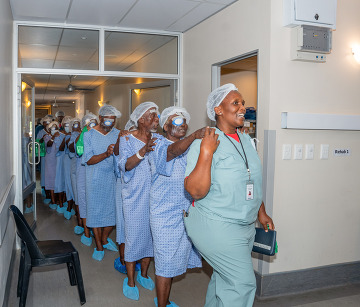 PHOTO CREDIT: TLC. TLC STAFF MEMBER LEADS EYE SURGERY PATIENTS BACK TO THEIR ACCOMMODATIONS ON THE MIRACLE CAMPUS AFTER THEIR FOLLOW-UP APPOINTMENTS.
|
TLC’s executive leadership team is about 50 percent female, and TLC is strongly committed across the organization to empowering women. TLC’s information technology department is headed by a female leader, and we see technology as a growth multiplier both organizationally and in the lives and careers of both men and women. |
|
|
6. What is most gratifying about working with TLC and partnering with LEPP?
We are so grateful for the opportunity to serve the nation of Eswatini, bringing solutions and innovations to solve challenges across the health care sector in an effort to bring more and better care to every patient. We are grateful to serve on a tightly integrated, solutions-focused, persevering, service-minded team that puts patients first and foremost. Partnering with LEPP over the last several years has provided much-needed equipment. In-kind donations like these free up other resources to provide care to as many patients as possible.
7. Can you give some tips for other PVO partners on how you’ve used federal surplus property and/or property and ASHA grants to successfully support your programs?
It’s a true privilege to be a PVO partner with LEPP. We have been able to capitalize on the resources available through LEPP by setting up multiple keyword searches for our most-needed items in the online portal. When a particular item becomes available, we quickly search the listing to see if the item is something that could benefit our patients.
Thanks so much for taking the time to help us learn more about your program and your passions. We look forward to many more years of partnering with TLC to continue to serve underserved communities. — The LEPP Team
|
|
 |
|
WorkwithUSAID.gov Is Now Available in Spanish, French, and Arabic
- The WorkwithUSAID.gov platform is now available in Spanish, French, and Arabic! The Work with USAID website is a great place to learn about how to partner with USAID, and now Spanish-, French-, and Arabic-speaking partners can benefit from the knowledge and tools contained on the platform.
|
|
|
|
The Limited Excess Property Program is part of the Local, Faith, and Transformative Partnerships (LFT) Hub, situated within USAID's Bureau for Inclusive Growth, Partnerships, and Innovation (IPI). The LFT Hub focuses on strengthening USAID’s ability to partner with non-traditional and diverse actors including local, faith-based, and community organizations; schools and hospitals; foundations; diaspora communities; cooperatives; and volunteer organizations.
Stay up to date with all the latest information from USAID’s LFT Hub by subscribing to additional newsletters from other LFT Hub initiatives! Learn more about the LFT Hub here:
- American Schools and Hospitals Abroad (ASHA)
- Cooperative Development Program (CDP)
- Faith-Based and Neighborhood Partnerships (FBNP)
- Limited Excess Property Program (LEPP)
- Locally Led Development Initiatives (LLDI)
- New Partnerships Initiative (NPI)
|
|
WE WANT TO HEAR FROM YOU!
Your stories, photos, videos, and news releases are always welcome. Help us spread the good news about your work and partnership with LEPP. Also, LEPP PVOs and Missions, please notify us of your upcoming LEPP-related public diplomacy events. Please send information to LEPP@USAID.gov.
For further information on the LEPP program, please email: LEPP@USAID.gov.
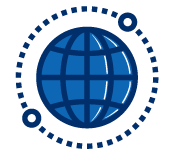 |
|
VISIT US ONLINE
|
 |
|
FOLLOW US ON TWITTER
|
 |
|
SUBSCRIBE TO OUR NEWSLETTER
|
|
|
|
|
|